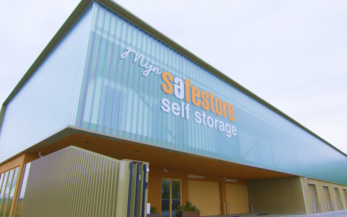5 minutes01/31/2017
Written by Karri Takki
Today, most companies will tell you that for them, safety is a primary concern, and that they are committed to developing their health and safety strategies. But is this impressive talk translating into reality?
Within this blog, I’ll give you an example of how two companies may seem to be committed to the concept of safety, and appear to be on the same level, but actually widely differ in their outlook and results. To describe the gap, I have drafted examples of two fictional, but realistic companies. The management teams of both companies always highlight the importance of safety in each speech they produce, and safety is an integral part of their marketing and branding. Otherwise, these two companies have very different views on safety - let’s take a closer look at our example companies, Alpha Ltd and Beta Ltd.
Company 1: Alpha Ltd
Safety Manager is part of the management team.
Safety KPIs are part of the management team KPIs.
Safety Manager has sufficient budget, authority and resources to continuously improve safety.
Other managers are well educated on safety matters and are leading the safety of their units.
Top tier management takes time to carry out safety walks in the field.
Entire workforce is engaged in safety – the welfare of themselves and others is a priority at all times.
Safety data is systemically collected and analysed to detect trends and increasing risks.
Safety processes, work practices and training are continuously revised and improved.
The KPIs used to measure the safety performance of the organisation are preventative by nature. The focus is on the number of safety observations, number of safety actions, number of safety toolbox talks, etc. In conclusion, we could say that Company Alpha is measuring safety through positive KPIs.
Company 2: Company Beta Ltd
Has appointed a Project Manager as part-time Safety Manager.
Safety Manager is allocated a very small annual budget to spend. His budget is spent on coffee at safety meetings and chocolate bars which he hands out to people who report near-misses and safety observations.
Safety Manager’s results are measured with LTIF or similar.
Safety work is considered mainly as a legal compliance function.
In this example, the KPIs used to measure safety performance are reactive by nature. The focus is on the LTIF, insurance premiums, number of accidents and near-misses. The KPIs used depend on what data is recorded, and how easy it is to put together. In this case, we could say that Beta is using negative KPIs to measure safety.
For related information on a positive or negative approach to health and safety management, I recommend the following blog post:“Turning Failure into Success”
Does your company look like Alpha Ltd? Great! Unfortunately, there are also companies where safety gets more consideration in that one banner speech than in the everyday working environment. For these kinds of companies, we can say that safety is just considered to be a desirable buzzword. This situation results from poor leadership and management, but you don’t need to continue along that route - take action and start changing the culture!
What if my company is somewhere between Alpha Ltd and Beta Ltd, or it looks similar to Beta Ltd?
There’s definitely room for improvement. As you are reading this blog on the topic of safety, you probably have the inclination to do something proactive, which is a positive start towards making safety more than just a buzzword for your company. Whether you belong to senior management, or you’re the Project Manager to whom safety has been assigned, you can initiate the necessary change. Here are a few tips on how to start developing the correct function and culture within your organisation.
Begin by obtaining the full commitment of the management team. Sell the safety development to the management team as an investment.
After you have the commitment from management, it’s time to put together a project team, which can later grow into your own safety committee. The project team should involve people from different functions and levels of the organisation.
With the management commitment and project team in place, you can start setting up your project. Below you can find guidelines on where to focus your efforts.
Understand
Understand the starting point. Ensure that your organisation complies with at least the regulatory requirements.
Define safety responsibilities throughout the organisation:
Be sure to involve everyone in this step. When you engage people in the process from the beginning, you ensure buy-in for any required changes.
Establish policies and plans.
Set measurable goals for each level, from the field up to top management.
Ensure that managers and supervisor are accountable for their units.
Report and analyse
Report everything:
Educate everyone on why reporting near-misses, small injuries etc. is important and how to do it.
Provide easy reporting channels - management needs to receive the information without delay.
Investigate:
Make sure that all incidents are fully and correctly investigated.
Always make sure the underlying cause is found and documented.
Turn investigation findings into corrective actions.
Engage
Communication:
Don’t forget to give feedback to the person who made the report.
Use two-way communication. When employees report hazards, remember to thank them and let them know that their concerns are being addressed.
Share as much as you can.
Use a positive approach:
No blaming for mistakes.
Issue constructive feedback.
Learn
Continuous improvement:
- Don’t stop once you have gone through the planned changes. Keep improving the way your safety is managed.
Remember, don’t spend six months preparing the project – you can start reshaping the culture as soon as you have detected the possible action. Do things in stages - you will soon see what works in your organisation, and what doesn’t.
I hope that in your next banner speech, you can realistically and honestly communicate the fact that your company does everything it can to ensure that everybody goes home safely at the end of the working day. I believe that as long as you have the motivation, you can initiate the change!



